Inside Cartel Country: Surfing In a Mexican Drug War
Words by Jed Smith The road to Guadalajara is as sketchy as they come. Californian big wave surfer Rusty Long knows from experience. He drove it just before the 2006 Mexican cartel wars kicked well and truly off, and swears he’ll never do it again. “To be honest, there’s not a lot of surfers doing that drive down to Mex because of the dangers,” he says. “I’ve done the drive down to Puerto twice before things got gnarly in the last seven or eight years, and I won’t do that drive again.” It was on this road that Australian surfers Dean Lucas and Adam Coleman were last seen before their blue and white Chevrolet van was discovered burned out on the side of the road with a pair of charred corpses inside. They had just departed the Topolobampo ferry, a place Rusty knows well. Why would you travel to a place where abductions and murders are uncomfortably common? This is why. Photo: Edwin Morales “That area is sketchy, straight-up sketchy,” he says. “I took that same ferry across and arrived at Topolobampo at night, as these guys did, and the first I thing I did was pull into the nearest hotel I could find. You don’t wanna take risks driving at night when you’re doing that drive, especially in areas like that.” Topolobampo lies in the state of Sinaloa on Mexico’s Pacific coast. The region is home to the Sinaloa drug cartel, the most active cartel in America, run by the infamous Joaquín Archivaldo ‘El Chapo’ Guzmán Loera, “the most powerful drug trafficker in the world,” according to the United States Department of Treasury. It was the Sinaloa cartel that’s said to have triggered the Mexican drug war following an assassination back in 2006, a war that’s seen 60,000 deaths and 12,000 kidnappings. Though, drug barons were unlikely to have gotten to Dean and Adam. Brian Conley, eerily alone in Mainland Mex. Photo: Chris Gurney “I doubt that it was organised crime,” says Rusty. “Those people are dealing with real money. I’m willing to bet it was some real bad-seed bandito kind of guys but I don’t know why they’d take it so far. It’s terrible. It sent some chills through me.” Although not directly responsible, the cartels still have a role to play. “There’s been a lot of issues with the last seven or eight years with all the cartel warfare,” Rusty says. “It’s led to a drop in tourism, which has led to more people losing their incomes because the tourism sector has dropped, and that leads to people taking desperate measures, more robberies, and things like that.” Eric Geiselman and the joys of mainland Mexico. Photo: Laserwolf You don’t have to look far to find surfing horror stories from Mexico. Former World Tour surfer Nate Yeomans recalls the time, as a 13-year-old, he was robbed at gunpoint: “One guy came around the outside of one of the cars. The other through the middle. They opened their jackets. One pulled out a pistol and the other guy pulled a sawn-off shotgun from his trench coat. The guy with the pistol walked right at me and put the barrel of the gun straight to my forehead. Then they made us all lie face down in the dirt. The guy with the sawn-off went into my dad’s car and rummaged around. They took my dad’s keys and hucked them off the cliff. Then the guy with the shotgun walked up to my dad’s buddy Scott, stuck the barrel of his gun to his stomach and started laughing in this crazy way. I thought for sure they were going to shoot us. The guy with the pistol got into Scott’s car and the guy with the shotgun jumped in the back of the truck. They kept laughing maniacally and drove off. Luckily we walked away… with shit in our pants. My dad ended up having to go to counselling a few months later because he had PTSD from the incident.” Luke Davis and the irresistible oil that you can find if you get lucky. Photo: Aaron Lieber Pro surfers Sterling Spencer and Nick Rozsa remember arriving at the famed righthand point belt of Salina Cruz the day a local mafia edict was passed forbidding foreigners from paddling out without paying. After finding themselves in a dinghy building surrounded by local mafia heads, a number of whom were armed, arguing between themselves over what price they were to pay, they were let go to surf for the price of USD$800. “Nothing is safe in Mexico at any second,” says Sterling. “It’s one of the sketchier places you can go, you can totally disappear.” Despite the dangers, the Mexican surf adventure will endure, says Rusty. “As far as travelling to parts of Mexico, like Baja for us in Cali, it’s not gonna change that,” says Rusty. “Places like Puerto (in the country’s far south), you fly there and then travel around that area.” For those planning on driving, beware. “Doing that long drive around Mexico you’ve gotta be aware of those certain regions that are dangerous. I’ve always stuck by the guidelines of not driving by night, especially in gnarly areas. “Also camping, don’t camp in areas known to be sketchy. Always stay in hotels,” he says. Noa Deane taps the walls of a foam party beneath the border. Photo: Laserwolf
Words by Jed Smith
The road to Guadalajara is as sketchy as they come. Californian big wave surfer Rusty Long knows from experience. He drove it just before the 2006 Mexican cartel wars kicked well and truly off, and swears he’ll never do it again.
“To be honest, there’s not a lot of surfers doing that drive down to Mex because of the dangers,” he says. “I’ve done the drive down to Puerto twice before things got gnarly in the last seven or eight years, and I won’t do that drive again.”
It was on this road that Australian surfers Dean Lucas and Adam Coleman were last seen before their blue and white Chevrolet van was discovered burned out on the side of the road with a pair of charred corpses inside. They had just departed the Topolobampo ferry, a place Rusty knows well.
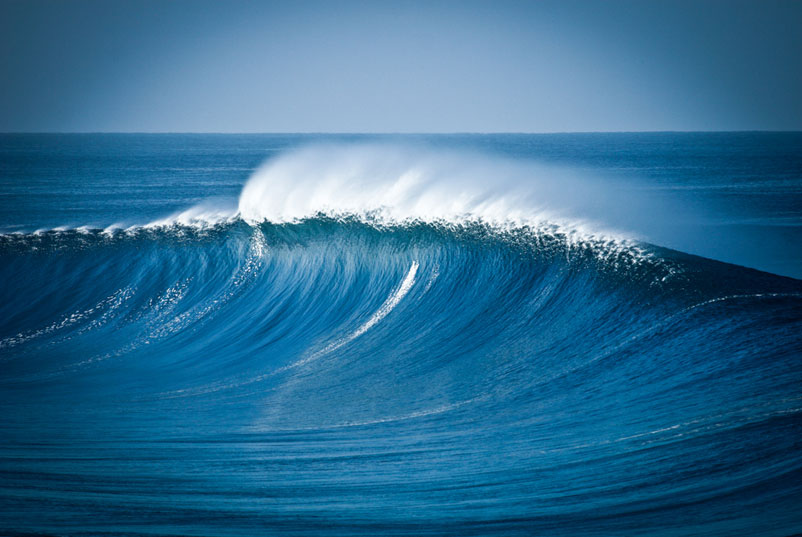
Why would you travel to a place where abductions and murders are uncomfortably common? This is why. Photo: Edwin Morales
“That area is sketchy, straight-up sketchy,” he says. “I took that same ferry across and arrived at Topolobampo at night, as these guys did, and the first I thing I did was pull into the nearest hotel I could find. You don’t wanna take risks driving at night when you’re doing that drive, especially in areas like that.”
Topolobampo lies in the state of Sinaloa on Mexico’s Pacific coast. The region is home to the Sinaloa drug cartel, the most active cartel in America, run by the infamous Joaquín Archivaldo ‘El Chapo’ Guzmán Loera, “the most powerful drug trafficker in the world,” according to the United States Department of Treasury. It was the Sinaloa cartel that’s said to have triggered the Mexican drug war following an assassination back in 2006, a war that’s seen 60,000 deaths and 12,000 kidnappings. Though, drug barons were unlikely to have gotten to Dean and Adam.
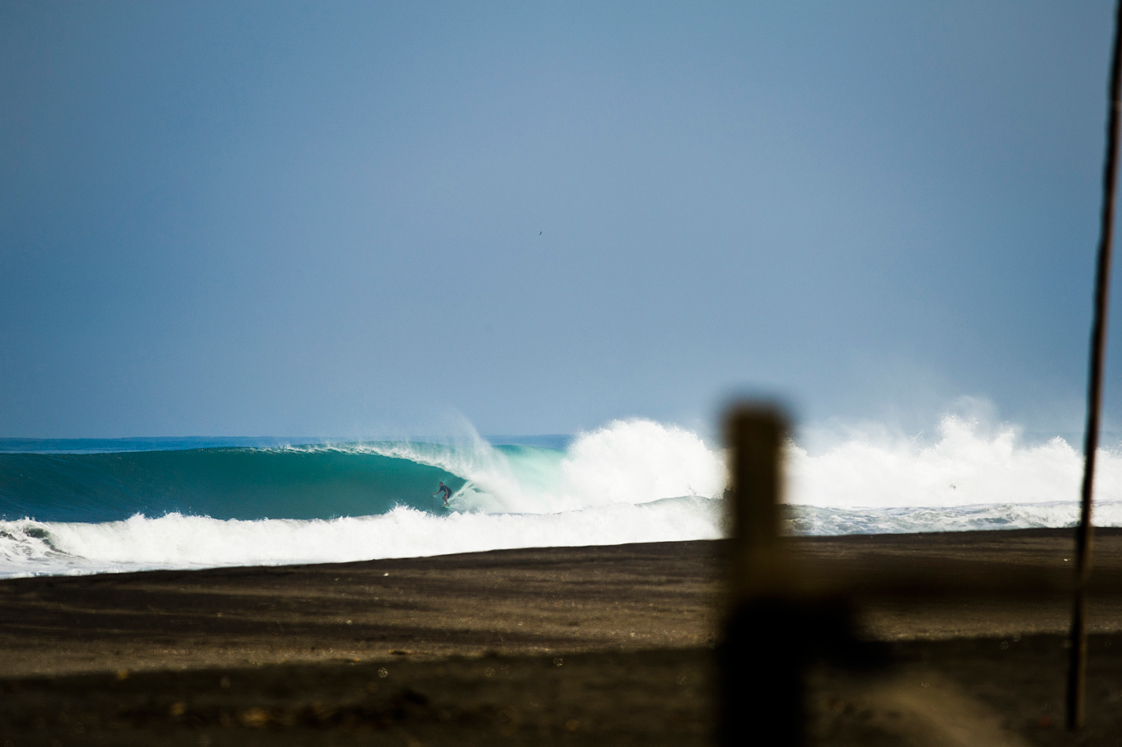
Brian Conley, eerily alone in Mainland Mex. Photo: Chris Gurney
“I doubt that it was organised crime,” says Rusty. “Those people are dealing with real money. I’m willing to bet it was some real bad-seed bandito kind of guys but I don’t know why they’d take it so far. It’s terrible. It sent some chills through me.”
Although not directly responsible, the cartels still have a role to play.
“There’s been a lot of issues with the last seven or eight years with all the cartel warfare,” Rusty says. “It’s led to a drop in tourism, which has led to more people losing their incomes because the tourism sector has dropped, and that leads to people taking desperate measures, more robberies, and things like that.”
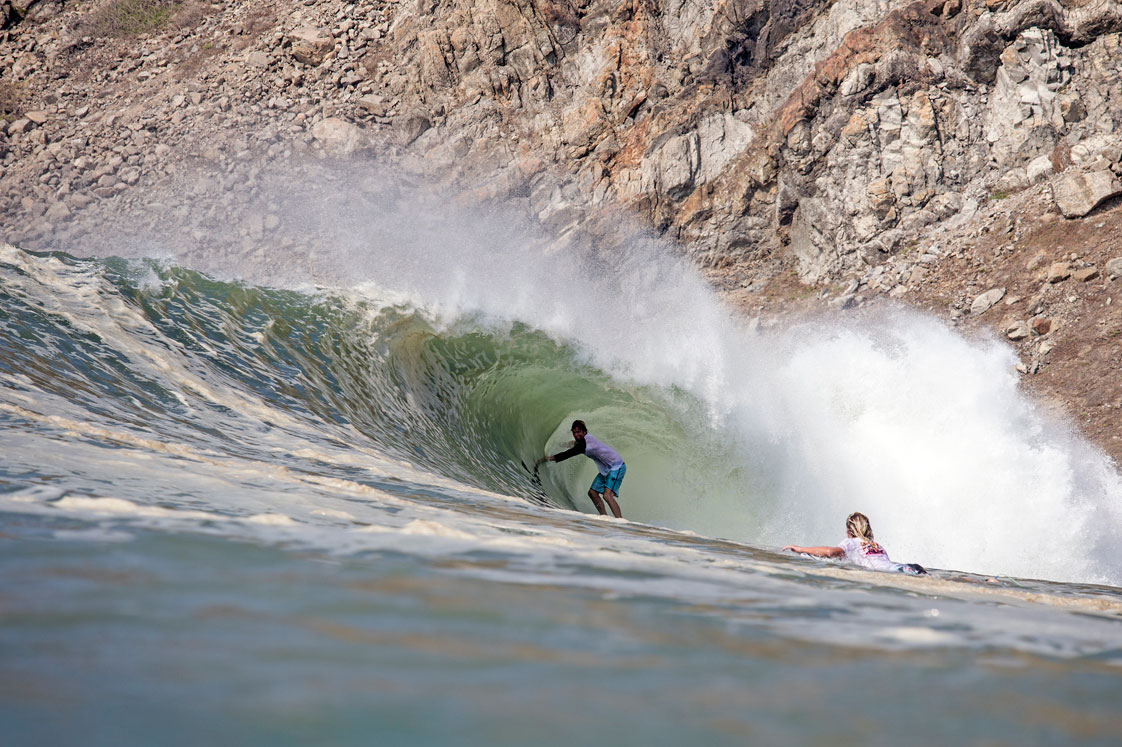
Eric Geiselman and the joys of mainland Mexico. Photo: Laserwolf
You don’t have to look far to find surfing horror stories from Mexico. Former World Tour surfer Nate Yeomans recalls the time, as a 13-year-old, he was robbed at gunpoint:
“One guy came around the outside of one of the cars. The other through the middle. They opened their jackets. One pulled out a pistol and the other guy pulled a sawn-off shotgun from his trench coat. The guy with the pistol walked right at me and put the barrel of the gun straight to my forehead. Then they made us all lie face down in the dirt. The guy with the sawn-off went into my dad’s car and rummaged around. They took my dad’s keys and hucked them off the cliff. Then the guy with the shotgun walked up to my dad’s buddy Scott, stuck the barrel of his gun to his stomach and started laughing in this crazy way. I thought for sure they were going to shoot us. The guy with the pistol got into Scott’s car and the guy with the shotgun jumped in the back of the truck. They kept laughing maniacally and drove off. Luckily we walked away… with shit in our pants. My dad ended up having to go to counselling a few months later because he had PTSD from the incident.”
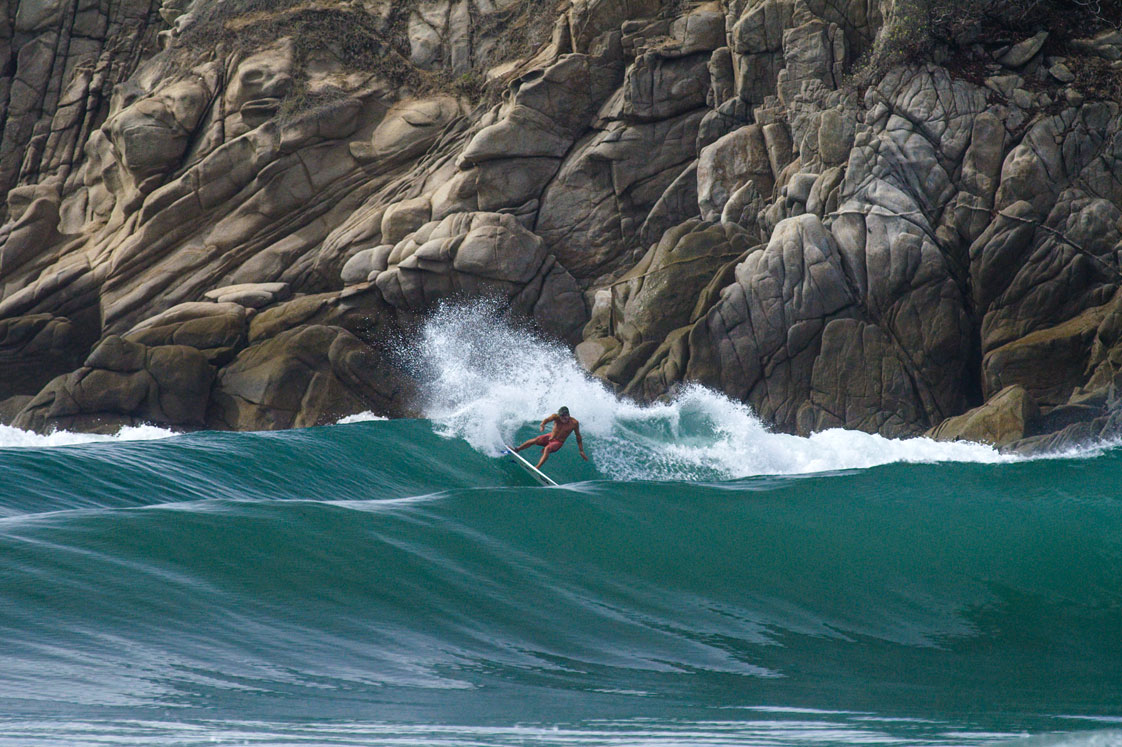
Luke Davis and the irresistible oil that you can find if you get lucky. Photo: Aaron Lieber
Pro surfers Sterling Spencer and Nick Rozsa remember arriving at the famed righthand point belt of Salina Cruz the day a local mafia edict was passed forbidding foreigners from paddling out without paying. After finding themselves in a dinghy building surrounded by local mafia heads, a number of whom were armed, arguing between themselves over what price they were to pay, they were let go to surf for the price of USD$800. “Nothing is safe in Mexico at any second,” says Sterling. “It’s one of the sketchier places you can go, you can totally disappear.”
Despite the dangers, the Mexican surf adventure will endure, says Rusty.
“As far as travelling to parts of Mexico, like Baja for us in Cali, it’s not gonna change that,” says Rusty. “Places like Puerto (in the country’s far south), you fly there and then travel around that area.”
For those planning on driving, beware.
“Doing that long drive around Mexico you’ve gotta be aware of those certain regions that are dangerous. I’ve always stuck by the guidelines of not driving by night, especially in gnarly areas.
“Also camping, don’t camp in areas known to be sketchy. Always stay in hotels,” he says.
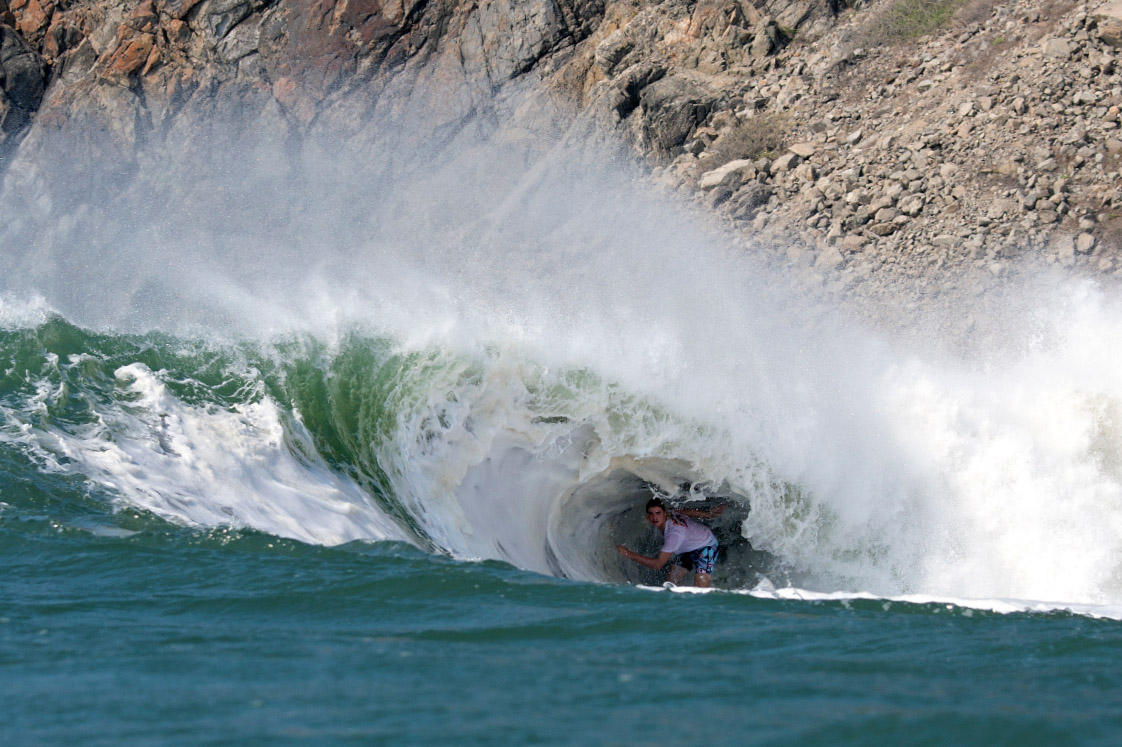
Noa Deane taps the walls of a foam party beneath the border. Photo: Laserwolf














Comments
Comments are a Stab Premium feature. Gotta join to talk shop.
Already a member? Sign In
Want to join? Sign Up